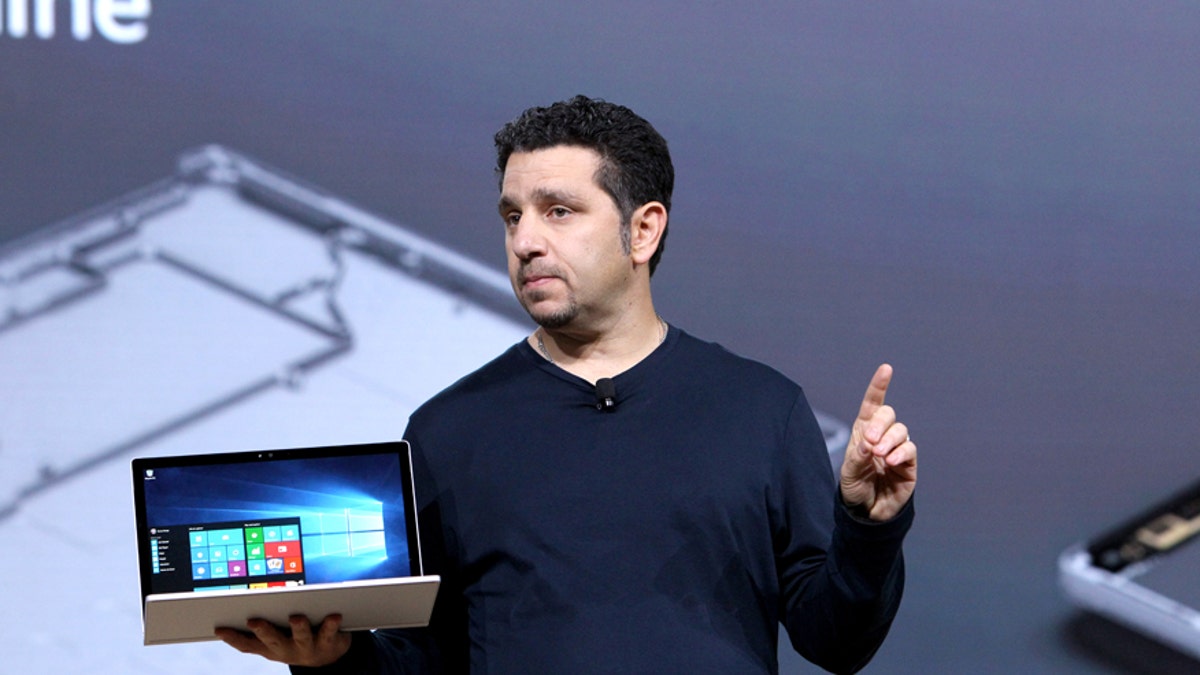
VP of Microsoft Surface Panos Panay speaks on stage at Windows 10 Devices Event, on Tuesday, Oct. 6, 2015 in New York City. (Mark Von Holden/AP Images for Windows) (Mark Von Holden/AP Images for Windows)
Microsoft’s Surface Book is a good first step to combine a tablet with a lap-friendly keyboard.
My first impression when picking up the Surface Book was “wow, this is big.” Its 13.5-inch display makes it close to a 14-inch laptop in size. But what’s really big is the keyboard. This is a full-sized keyboard and then some. And the trackpad is also roomy.
My second impression: it’s still top-heavy. In other words, it doesn’t have the typical weight distribution of a laptop. While that’s not surprising – because, after all, the display portion can be detached from the keyboard base to become a standalone tablet – I was expecting something that was a little less top-heavy.
Related: Microsoft launches Surface Book, its first laptop, debuts Surface Pro 4, Lumia 950 phone
But Microsoft has done a good job with the so-called “dynamic fulcrum hinge” that the tablet (display) drops into when attaching it to the keyboard base: no matter how hard you poke at the screen it has enough give to keep it firmly upright. This is a radically different design than the Surface Pro which requires a kickstand to prop it up. And therein lies the beauty of the Surface Book. Unlike the Surface Pro 4, you can use it on your lap just like a laptop. I tried typing for a while on my lap and found it very lap-friendly.
Related: Microsoft to open giant NY City store this month, just a few blocks from Apple's
My third impression was that it’s not light. With the keyboard base, Microsoft lists it as over 3.3 pounds on its “tech spec” page ) but I was told by a person demoing the Surface Book that it’s heavier than that. Whatever the case, it feels roughly the same weight as my 13.3-inch MacBook Pro Retina, which weighs 3.48 pounds.
Things get considerably lighter when you detach the tablet portion from the base. That’s done by pressing a button on the base. Voila, you have seriously large tablet that feels light for its size. And it’s a powerhouse too. It can be configured with fast Intel Core i7 processors and comes standard with 8GB of RAM. And the display is a stunner. The 13.5-inch “PixelSense” 3,000x2,000 touchscreen display packs in 6 million pixels.
And the competition? My guess is that its most notable rival will be the 12.9-inch iPad Pro. I suspect a lot of reviews will compare the two because they are both large, powerful tablets from arguably the two leading American computer companies. I haven’t had a chance to use the iPad Pro yet but I can say after briefly using the Surface Book that it’s an impressive standalone tablet.
The bad news is the price. The Surface Book starts at $1,499. That immediately puts it out of reach of the vast majority of consumers. Whether Microsoft has plans to bring out more affordable versions of the Surface Book remains to be seen. Let’s hope it does.




















